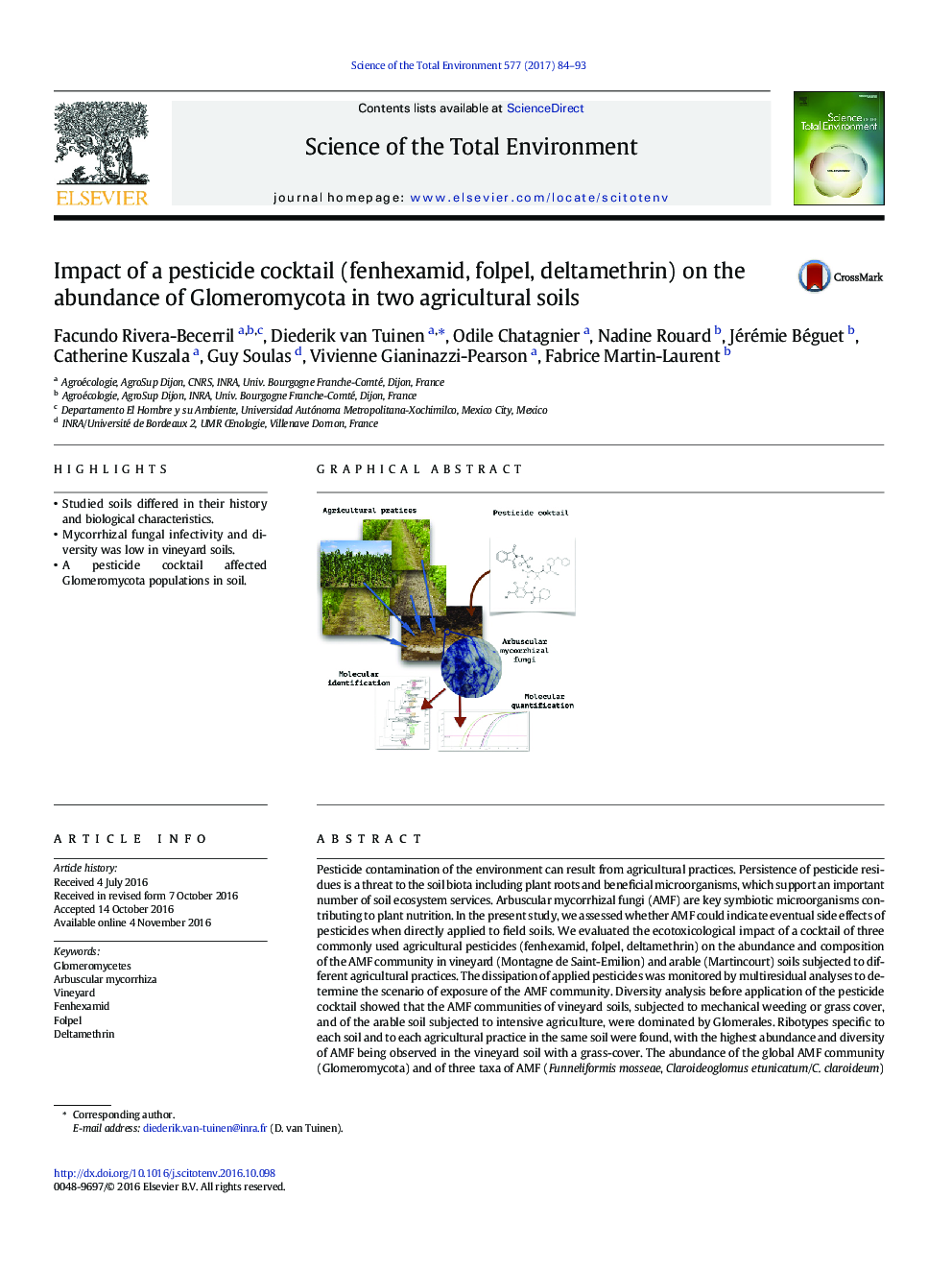| کد مقاله | کد نشریه | سال انتشار | مقاله انگلیسی | نسخه تمام متن |
|---|---|---|---|---|
| 5751707 | 1619714 | 2017 | 10 صفحه PDF | دانلود رایگان |

- Studied soils differed in their history and biological characteristics.
- Mycorrhizal fungal infectivity and diversity was low in vineyard soils.
- A pesticide cocktail affected Glomeromycota populations in soil.
Pesticide contamination of the environment can result from agricultural practices. Persistence of pesticide residues is a threat to the soil biota including plant roots and beneficial microorganisms, which support an important number of soil ecosystem services. Arbuscular mycorrhizal fungi (AMF) are key symbiotic microorganisms contributing to plant nutrition. In the present study, we assessed whether AMF could indicate eventual side effects of pesticides when directly applied to field soils. We evaluated the ecotoxicological impact of a cocktail of three commonly used agricultural pesticides (fenhexamid, folpel, deltamethrin) on the abundance and composition of the AMF community in vineyard (Montagne de Saint-Emilion) and arable (Martincourt) soils subjected to different agricultural practices. The dissipation of applied pesticides was monitored by multiresidual analyses to determine the scenario of exposure of the AMF community. Diversity analysis before application of the pesticide cocktail showed that the AMF communities of vineyard soils, subjected to mechanical weeding or grass cover, and of the arable soil subjected to intensive agriculture, were dominated by Glomerales. Ribotypes specific to each soil and to each agricultural practice in the same soil were found, with the highest abundance and diversity of AMF being observed in the vineyard soil with a grass-cover. The abundance of the global AMF community (Glomeromycota) and of three taxa of AMF (Funneliformis mosseae, Claroideoglomus etunicatum/C. claroideum) was evaluated after pesticide application. The abundance of Glomeromycota decreased in both soils after pesticide application while the abundance of Claroideoglomus and F. mosseae decreased only in the arable soil. These results show that higher doses of pesticide exposure did not affect the global abundance, but altered the composition, of the AMF community. Resilience of the AMF community composition was observed only in the vineyard soil, where F. mosseae was the most tolerant taxon to pesticide exposure.
207
Journal: Science of The Total Environment - Volume 577, 15 January 2017, Pages 84-93